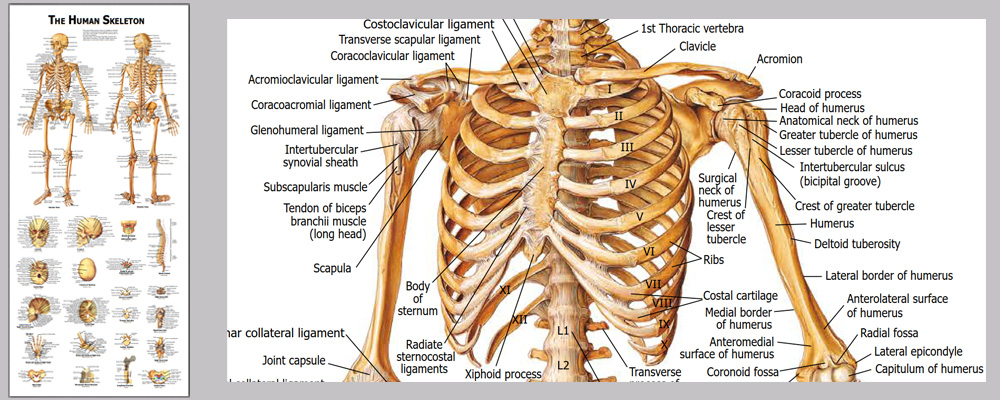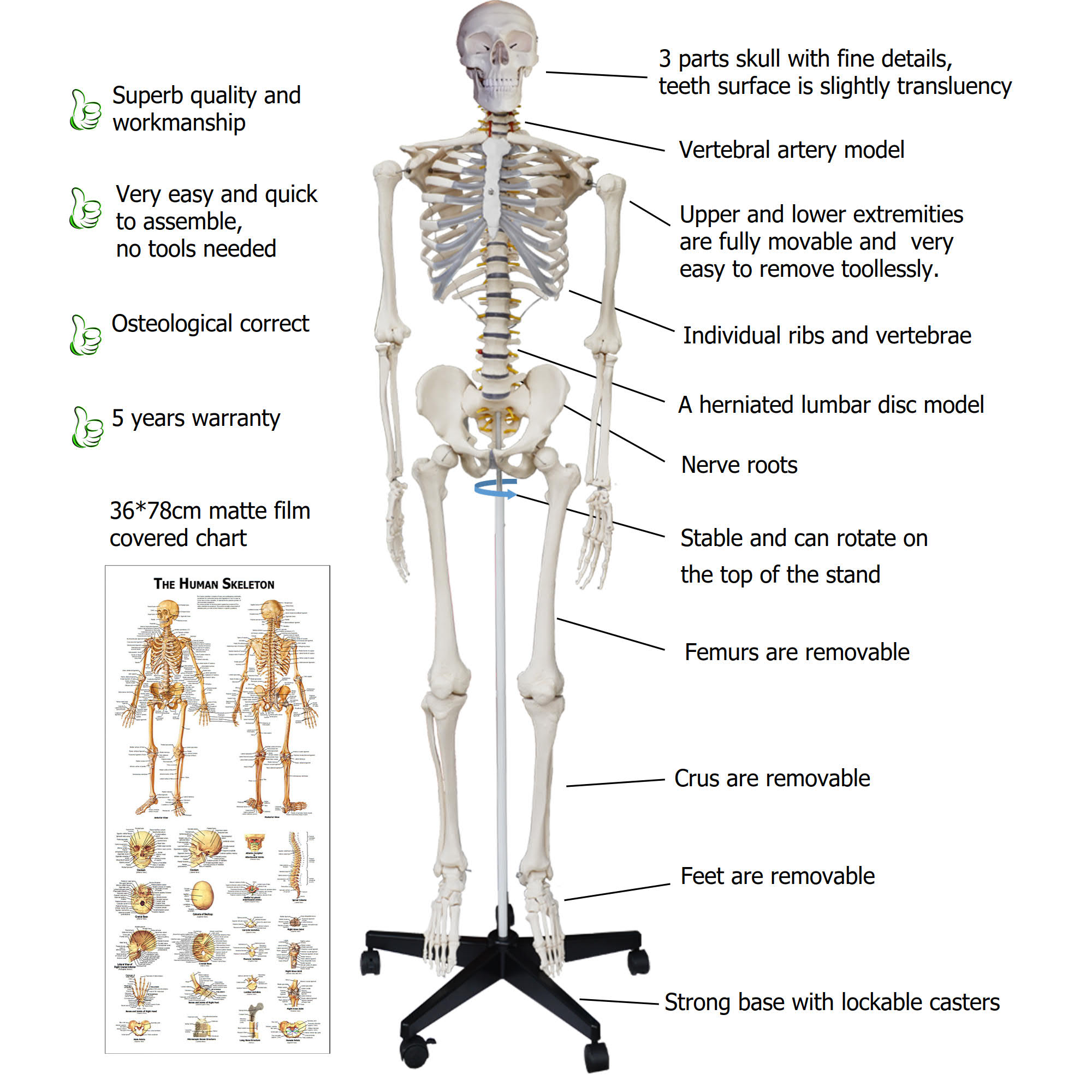Company News
Established in 2008 in Shenzhen China, Established in 2008 in Shenzhen China, we set out to provide high quality anatomical models,human skeleton model,skeleton chart,skull model,spine model,Disarticulated skeleton,heart model. We have rich experienced engineering team to design creative, cost effective and durable structure, our rich experienced production and quality team assure the best delivery
how to get human skeleton model-user manual

how to get human skeleton model(user manual)
The human skeleton model is an essential tool for understanding the structure and function of the human body. It is widely used in medical education, forensics, and archeology. Whether you are a student, teacher, or professional in the field, having access to a human skeleton model can greatly aid in your studies and research. In this article, we will explore different ways to obtain a human skeleton model and provide a detailed user manual.
Before diving into the various methods of obtaining a human skeleton model, let's first define what it is and why it is important. A human skeleton model is a life-size replica of the skeletal system of a human being. It includes bones, joints, and ligaments, and is usually made of plastic, resin, or latex. This model is used to study the anatomy of the human body and understand the connections between bones, muscles, and organs.
Now, let's take a look at the different ways to obtain a human skeleton model:
1. Purchase from a Medical Supplier:
One of the most common and reliable ways to get a human skeleton model is to purchase it from a medical supplier. These suppliers specialize in selling medical equipment and models to schools, hospitals, and individuals. They offer a wide range of options, such as full-size or half-size models, budget-friendly or high-end models, and anatomically correct or simplified versions. Some popular medical suppliers include 3B Scientific, Denoyer-Geppert, and Nasco Healthcare.
2. Buy from an Online Marketplace:
Another option is to purchase a human skeleton model from an online marketplace like Amazon, eBay, or Etsy. These platforms offer a variety of models from different sellers, making it easier to find a model that fits your needs and budget. However, be sure to do thorough research before making a purchase to ensure the model's quality and accuracy.
3. 3D Print:
The advancements in technology have made it possible to 3D print a human skeleton model. This method is cost-effective and allows for customization to fit specific requirements. Several websites offer files for 3D printing a human skeleton model, such as Thingiverse, MyMiniFactory, and CGTrader. However, this option requires access to a 3D printer and knowledge of 3D modeling.
4. Borrow from a Library or School:
If you are a student or have access to a library, you may be able to borrow a human skeleton model for a limited period. Many educational institutions and libraries have a collection of models and other resources available for students and researchers. This option is free of cost, but you may not have full control over the model and its availability.
Now that you have obtained a human skeleton model, it's time to learn how to use it effectively. Here is a step-by-step user manual to help you get started:
Step 1: Familiarize Yourself with the Model
Start by closely examining the model and familiarizing yourself with its different parts and their names. You can refer to an anatomy textbook or online resources to understand the functions of each bone and joint. Take note of any moveable joints and try to manipulate them to understand their range of motion.
Step 2: Learn How to Assemble and Disassemble the Model
If your model comes disassembled, you will need to learn how to put it together. Begin by identifying the individual bones and their corresponding joints. Some models come with labels, making it easier to identify the parts. Carefully follow the instructions provided with the model to assemble it correctly. Similarly, learn how to disassemble the model for storage or transportation.
Step 3: Check for Accuracy
It is essential to ensure that your model is anatomically correct. Compare it with an actual human skeleton or high-quality images to determine its accuracy. Look for any missing or misplaced bones and joints. If you find any discrepancies, contact the supplier or manufacturer for a replacement or refund.
Step 4: Use the Model for Study and Research
Now that you are familiar with the model and have confirmed its accuracy, you can start using it for study and research. Use it to understand how bones, joints, and muscles work together to facilitate movement and support the body. You can also use it in conjunction with other models or resources to study different systems of the body, such as the nervous system or respiratory system.
Step 5: Take Proper Care of the Model
To ensure the longevity of your human skeleton model, it is crucial to take proper care of it. Avoid placing it in direct sunlight or extreme temperatures as it can cause damage to the model. Clean it regularly using a soft cloth and mild soap to remove any dust or debris. If the model has movable joints, use a lubricant to keep them functioning smoothly.
In conclusion, obtaining a human skeleton model can greatly enhance your understanding of the human body. Whether you purchase it from a medical supplier, online marketplace, or 3D print it, it is essential to familiarize yoursel

JC Anatomy Classic Human Skeleton
Skeleton Product Manual detailing 172 advanced anatomical landmarks
Skeleton Assembly Guide outlining the easy steps to assemble your skeleton (takes 5 minutes)
Skeleton Study and Numbering Guide, packed with:
189 Numbered Stickers for labeling the major landmarks of the human skeleton
27 page, full color educational guide detailing Skeletal System Physiology, Bony Features Terminology, and Positional Terminology
Introducing the Classic Human Skeleton from JC Anatomy. Standing 5 feet 6 inches tall, this skeleton towers over the competition. He offers an exceptional level of detail, including major and minor anatomical features and structures, right down to the tiniest detail.
His skull is easily detachable from the body of the skeleton. The skull features a removable calvarium, or skull cap, secured with pegs as well as magnets for added stability. External hardware is kept to a minimum for an uninterrupted view of the skull. Inside the skull, every suture, foramen, and groove is visible, allowing for a full study of the internal and external structures alike. It also features the spinal nerves.
When replaced on the skeleton, the skull sits comfortably on the axis, allowing realistic movement of the skull. The hyoid bone is present, and is easy to study with or without the skull in place. The skeleton is fully articulated, and can replicate all natural movements at the joints. The arms can clearly display flexion, extension, abduction and adduction, circumduction of the shoulder, and even pronation and supination of the radial-ulnar joint. Similarly, the legs can perform all of the movements of the acetebulofemoral joint and knee.
Also included with the Classic Human Skeleton is our brand new Study and Numbering bundle. The centerpiece of this bundle is a 27-page, full color, highly detailed studying and numbering guide. The guide comes with 189 numbered stickers to be placed on the skeleton for a more interactive learning experience. The Study and Numbering guide also features in-depth discussions about such topics as skeletal system physiology and bony feature terminology to take your knowledge to the next level. The bundle also includes two free gifts that will allow you to show off your love for anatomy anywhere you go
JC Anatomy offers a rare combination in medical education – Exceptional detail and a price that won’t break the bank. With quality in every model and our dedicated customer support team just an email or call away, we know you’ll love Axis from day one.
Model includes pelvic mount stand.
